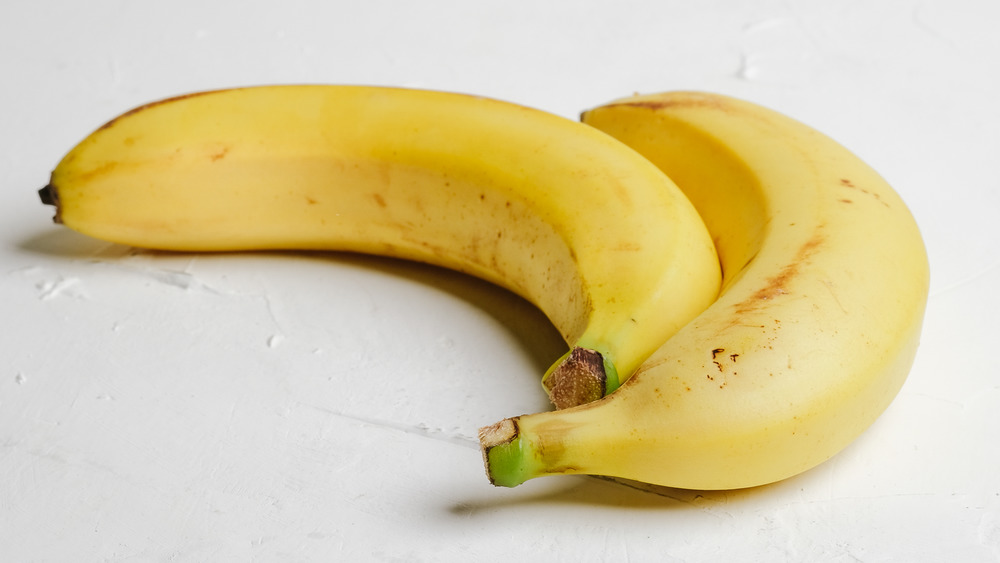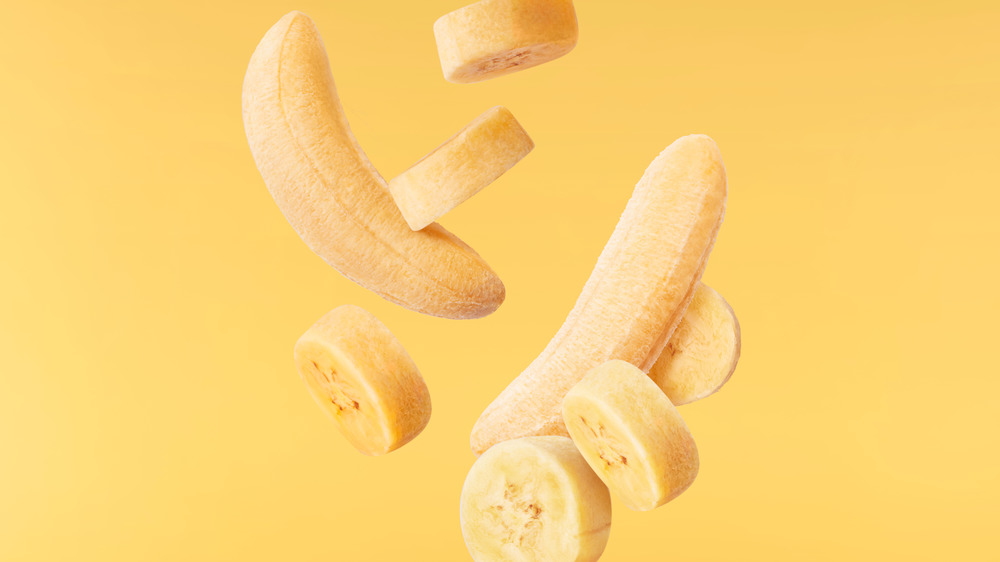The Hidden Banana Nutrition Detail That Will Change How You Think Of Them
Bananas are notoriously delicious and popular as far as fruits go. They can be made into a number of different dishes like pancakes or muffins or cake, or eaten on their own as a snack or healthier dessert option. They're even used to top less-healthy desserts. But there's a lot you may not know about the common household fruit, such as its actual serving size suggestion.
Serving sizes have been a subject of debate. According to the FDA, "the serving sizes listed on the Nutrition Facts label are not recommended serving sizes. By law, serving sizes must be based on how much food people actually consume, and not on what they should eat." Their expert notes that we're eating much larger sizes than we had been in decades past, and the listed serving sizes on boxes don't do much to help change that. Based on the FDA's note, it would seem serving sizes are totally subjective nowadays compared to their factual value in days past. A writer at HuffPost spoke to 10 nutritionists who looked into a variety of foods with serving sizes that they note most often don't exactly align with how much you should be eating, bananas among them.
Nutritionist Alison Acerra noted that many bananas one might assume are medium-sized may actually be about 2 times bigger than that. How big is "medium?" According to Healthline, a medium-sized banana measures about 7 to 8 inches and weighs 118 grams.
So what is the average serving size for a banana and what does it mean if someone eats more?
While it may be tempting to grab the 19 cent Trader Joe's bananas, if they're bigger than a single serving and you're watching your calories, they may not be the best option for your diet—despite the added nutritional value.
Acerra also pointed out that due to the varied sizes offered in stores, it can be almost impossible to differentiate what a medium-sized banana should look like when browsing and buying. But fear not, HealthierYou offers a quick tip to determine if you're buying the size you think you are, noting you should "stretch your thumb and pinkie finger. If your banana is bigger than that, it is larger than 1 serve. Or if you have a pencil handy, the length of the average pencil will give you the right size".
There are some upsides. Bananas contain immense nutritional benefits, including, as the Harvard School of Public Health notes, "vitamin B6, fiber, potassium, magnesium, vitamin C, [and] manganese".
And for those who do realize they've got a few bananas that are larger than the recommended serving size, there are so many recipes to choose from to add the leftovers to, like one of the 17 desserts Tasty recommends. Zero waste, here you come!

